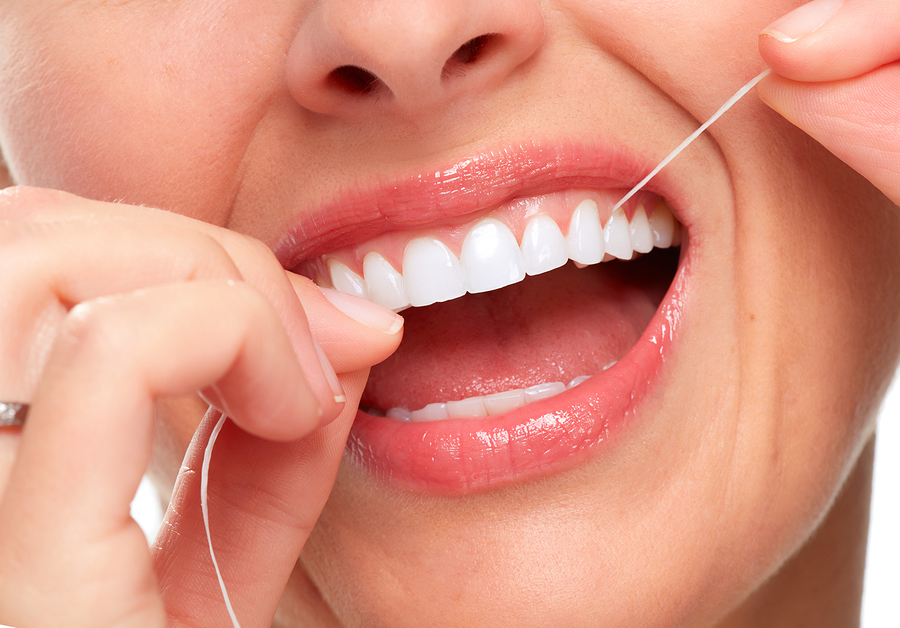An important tool for interdental cleaning, floss promotes oral health in several different ways. If you’re not sure when and how to effectively clean between your teeth, this flossing guide has everything you need to know.
The Benefits of Flossing
Essentially, flossing allows you to clean portions of your teeth that are inaccessible to a traditional toothbrush. If it is allowed to build up, plaque can eventually harden into tartar, which flossing prevents. Flossing can also help eliminate bacteria, while preventing gum disease.
How Often Should You Floss?
The American Dental Association recommends that people floss at least once per day to eliminate plaque in areas between the teeth. That said, if you’ve eaten foods that tend to stick between teeth, you should consider flossing a second time before you go to bed. If your gums bleed when flossing, it’s usually a sign that you haven’t been doing it enough.
Best Flossing Techniques
Since you will be inserting your fingers into your mouth, make sure to thoroughly wash your hands for 20 seconds before touching your floss. Once your hands are clean, employ the following techniques to remove as much plaque as possible:
- Wind: Wind up approximately 18 inches of floss around the index or middle finger on one of your hands, along with a very small amount of floss on the index or middle finger of your other hand. While either finger is fine, it’s generally a good idea to use your middle finger, since this leaves your index finger free to work the floss between teeth. Although 18 inches may sound like a lot of floss, you will need it to ensure that you are inserting clean floss between each tooth. Once you have your floss wrapped around your fingers, pinch it between your index fingers and thumbs, leaving about a one- to two-inch space between them.
- Guide: Holding the floss tightly between your fingers, use your thumb to guide the string or tape between your upper teeth. Make sure to work slowly using a gentle hand, so as not to damage your gums. Try to use a zig-zag motion as you move the floss between teeth, being careful not to allow the floss to pop or snap between teeth as it enters.
- Clean: Once the floss is in place, contour it to one side of a tooth, creating a C shape that puts it flush against the tooth’s surface. Next, slide the string or tape up and down against the tooth and beneath the gum line. Repeat this step against the backside of the tooth before moving on to the adjacent tooth. Once you’ve finished, remove the floss and unroll a fresh, clean section from the finger of one hand, while rolling the tainted floss onto the finger of the other hand.
How to Floss with Braces
While it can be a tricky process, it’s very important to floss when you have braces. For best results, use a waxed floss or dental tape that’s less likely to get hung or damaged against braces. Start by threading the floss under the main wire before passing between two teeth. Instead of snapping the floss in place, gently move it up and down. When you are ready to move to the next tooth, carefully remove the floss and re-thread it beneath the main wire to clean the next pair of teeth. Repeat this process until you have flossed between every tooth in your mouth.
Where Should I Start Flossing?
It doesn’t really matter where you start flossing, as long as you clean every single tooth. After several years of flossing, it can become a mindless activity. In turn, it’s usually better to use the same flossing routine every time, so you won’t accidentally skip one or more teeth. However you choose to do it, try to focus on repeating the same actions to create positive habits you can repeat on a daily basis.
Is it Better to Floss Before or After Brushing?
While many dentists have opinions on the subject, there’s no evidence to suggest that the sequence makes much difference, as long as you do both thoroughly. If you have a personal distaste for flossing, it may be a good idea to get it out of the way first. That said, whatever order you choose, it’s important to do a thorough job to reduce your risk of cavities and gingivitis.
What’s the Best Type of Floss?
While some manufacturers market their products as superior to traditional floss, there’s no evidence that one type outperforms another. For some people, however, certain types of floss may be more comfortable and easier to use. It’s a good idea to experiment with different types of floss, including waxed, unwaxed, thick and flat. Obviously, the more comfortable you are with a certain type of floss, the more likely you are to consistently use it.
When Is the Best Time to Floss?
While most people only need to floss once per day, the timing can have an impact on dental health. Flossing at night is typically more beneficial than flossing in the morning, because you are more likely to have food particles lodged between teeth.
Helping Children Learn to Floss
Many kids are resistant to flossing, because they don’t like the sensation or added responsibility. It’s important to teach your kids proper oral hygiene at a very early age, so they can develop good habits that will last a lifetime. If your child has difficulty controlling dental floss, stand behind him or her and use your fingers to guide the string or tape between teeth. You should make sure the child is watching in mirror, as you demonstrate the correct ways to maneuver the floss. You should also consider setting a good example by flossing in front of your child whenever you get an opportunity.



 Previous Article
Previous Article